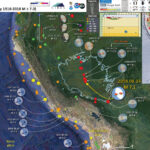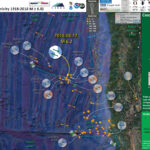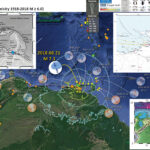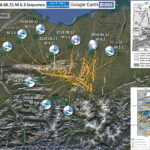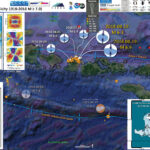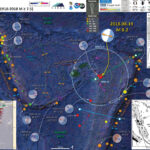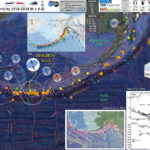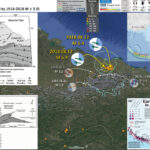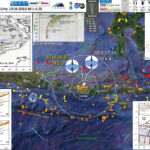The earthquakes continue, every day. Today, there was a large earthquake along the southern New Hebrides Trench. Today’s M 7.1 earthquake happened along one of the more active subduction zones in the world. The hypocentral (3-D location) depth of ~26…
Earthquake Report: Deep in Peru
Busy week! Still Got to this intermittently today and it is fine that it took me a while to get this report together. One might ask “why?”. Well, this earthquake, while having a large magnitude, was quite deep. Because earthquake…
Earthquake Report: Blanco fracture zone
As I was getting ready for school today, I noticed the M 6.2 notification from the USGS Earthquake Notification Service. People can sign up for the USGS ENS so that they can get emails when the USGS broadcasts this information.…
Earthquake Report: Venezuela
Busy week! We just had a M 7.3 earthquake in northern Venezuela. Sadly, this large earthquake has the potential to be quite damaging to people and their belongings (buildings, infrastructure). https://earthquake.usgs.gov/earthquakes/eventpage/us1000gez7/executive The northeastern part of Venezuela lies a large strike-slip…
Earthquake Report: Alaska Update
Thanks to Jamie Gurney, I took a looksie at the Kaktovik earthquake sequence again. He had interpreted this sequence to possibly represent an extensional step over in a right-lateral (dextral) strike-slip tectonic fault system. I do not include much background…
Earthquake Report: Lombok, Indonesia
Well well. After a pretty seismically quiet first half of 2018, we have been catching up rapidly. The ultra deep Great Earthquake in Fiji. And now the Lombok sequence continues. https://earthquake.usgs.gov/earthquakes/eventpage/us1000gda5/executive The inhabitants and tourists in the Lombok, Indonesia region…
Earthquake Report: Fiji
WOW We just had a Great Earthquake in the region of the Fiji Islands, in the central-western Pacific. Great Earthquakes are earthquakes with magnitudes M ≥ 8.0. This earthquake is one of the largest earthquakes recorded historically in this region.…
Earthquake Report: Andreanof Islands, Aleutians
Well, yesterday while I was installing the final window in a reconstruction project, there was an earthquake along the Aleutian Island Arc (a subduction zone) in the region of the Andreanof Islands. Here is the USGS website for the M…
Earthquake Report: northern Alaska
Well, I awakened shortly after this M 6.4 earthquake hit the northern part of Alaska, along the north Slope, north of the Brooks Range. My inbox has had a lower frequency of USGS ENS notifications since Kilauea has settled down…
Earthquake Report: Lombok, Indonesia: Update #1
Yesterday morning, as I was recovering from working on stage crew for the 34th Reggae on the River (fundraiser for the non profit, the Mateel Community Center), I noticed on social media that there was an M 6.9 earthquake in…


